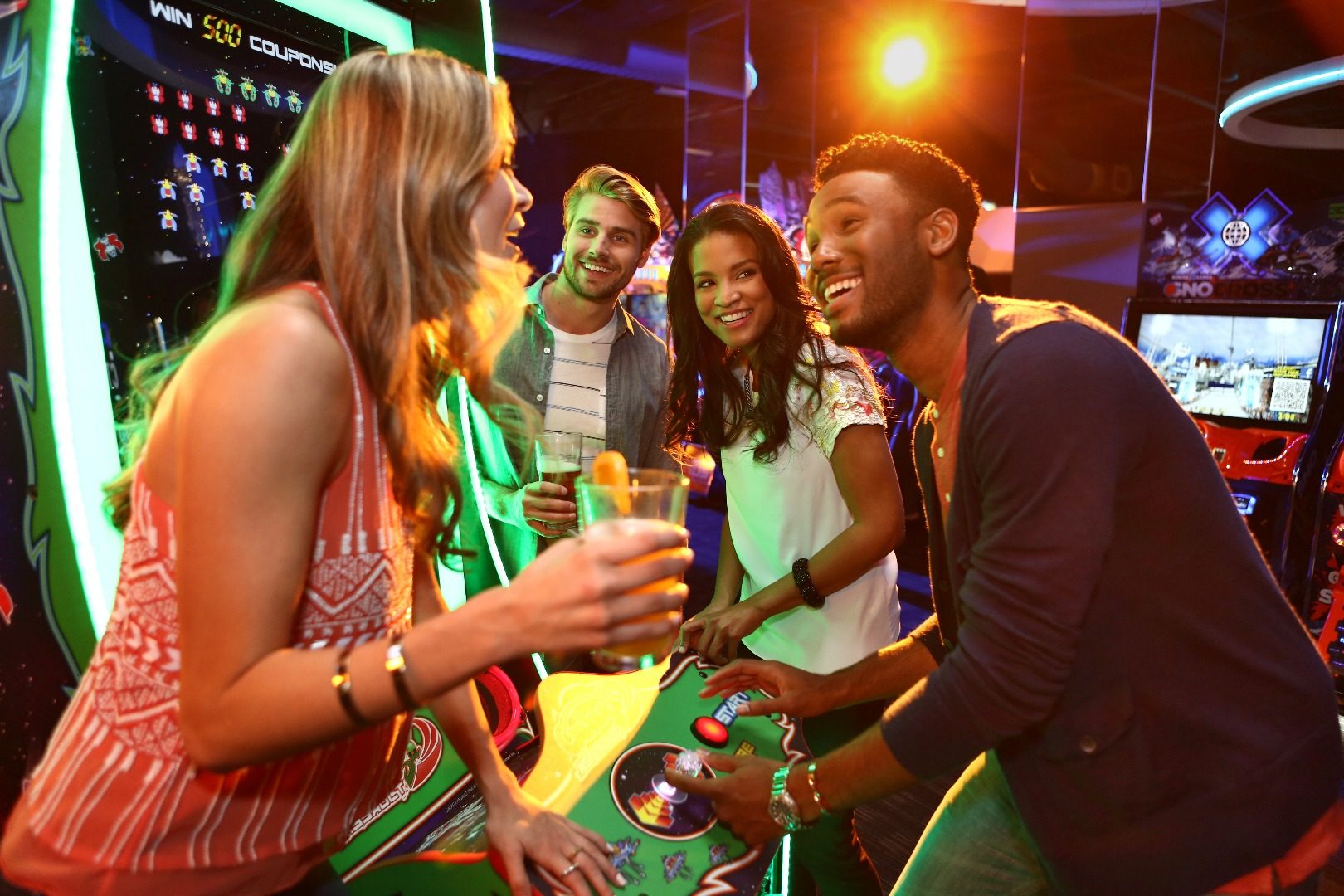Delivery Strategy Doesn’t Matter When Guests Come for the Fun, Not the Food

Photo Caption: Dave & Buster's makes the majority of its money on the games customers play in its stores.
Skift Take
As more and more chains beef up their delivery sales, Dave & Buster's and similar "eatertainment" concepts are instead relying on their ability to get customers off the couch and into their stores.
Delivery may be providing incremental sales boosts to national restaurant chains left and right (see: Wendy’s, Chipotle, Taco Bell, among others), but for those that have built big brands around the in-store experience, the conversation around off-premise sales is far more cautious.
At Dave & Buster’s gaming accounted for 58 percent of total revenues and food and beverage accounted for 42 percent of total revenues at the end of fiscal 2018, the company reported on Tuesday. Its primary focus is on attracting more guests to walk in the door more frequently and spend money at any of its 125 stores, which are a significant real estate investment. The company’s fleet of stores range in size from 16,000 to 66,000 square feet.
Recently appointed CEO Brian Jenkins has been focused on investing in more compelling games and rethinking the food and beverage program to simplify the menu, increase the quality of the food, and make it more accessible to a greater number of customers. Early signs point to positive growth: Dave & Buster’s posted comparable store sales growth of 2.9 percent in the fourth quarter (which ended on February 3) and overall revenue growth of 11 percent in 2018.
Relying on the Experience
As the so-called “eatertainment” segment continues to grow, these concepts are well-positioned to sidestep the profit margin volatility that has gone hand-in-hand with the growing delivery sales channel. Sharon Zackfia, the head of consumer equity research for William Blair, said that, by and large, she doesn’t expect to see these concepts scramble to offer delivery in the same way that casual dining, fast casual, and quick-service concepts have because the business really depends on customers who want to get out and socialize.
“For the vast majority of eatertainment concepts, delivery goes against what they are really designed to do, which is bring people together, not have them stay in their house,” Zackfia said.
That, in turn, could prove to be beneficial to these concepts’ bottom lines down the road, since on-premise sales are generally more profitable than off-premise sales, where third-party services can take a bite out of margins. Eatertainment profit margins are already generally higher than the casual dining counterparts; the concepts average a 22 percent profit margin per unit as compared to 17 percent in casual dining, according to William Blair estimates.
These concepts are also poised to take advantage of a greater consumer shift to more experiential retail and restaurant offerings, Zackfia noted. Food alone might not drive people out of their houses, but a compelling overall experience will.
Zackfia predicts that all of these factors could give rise to a boom in eatertainment concepts the same way that fast casual has upended the industry over the past twenty years. “It’s right in the middle of that fairway in terms of hitting what I think people are going to want to go out of their house to do,” she said. “I think these are going to be more and more prevalent going forward.”

The travel industry's top event returns this fall.
September 16-18, 2025 - NEW YORK CITY
